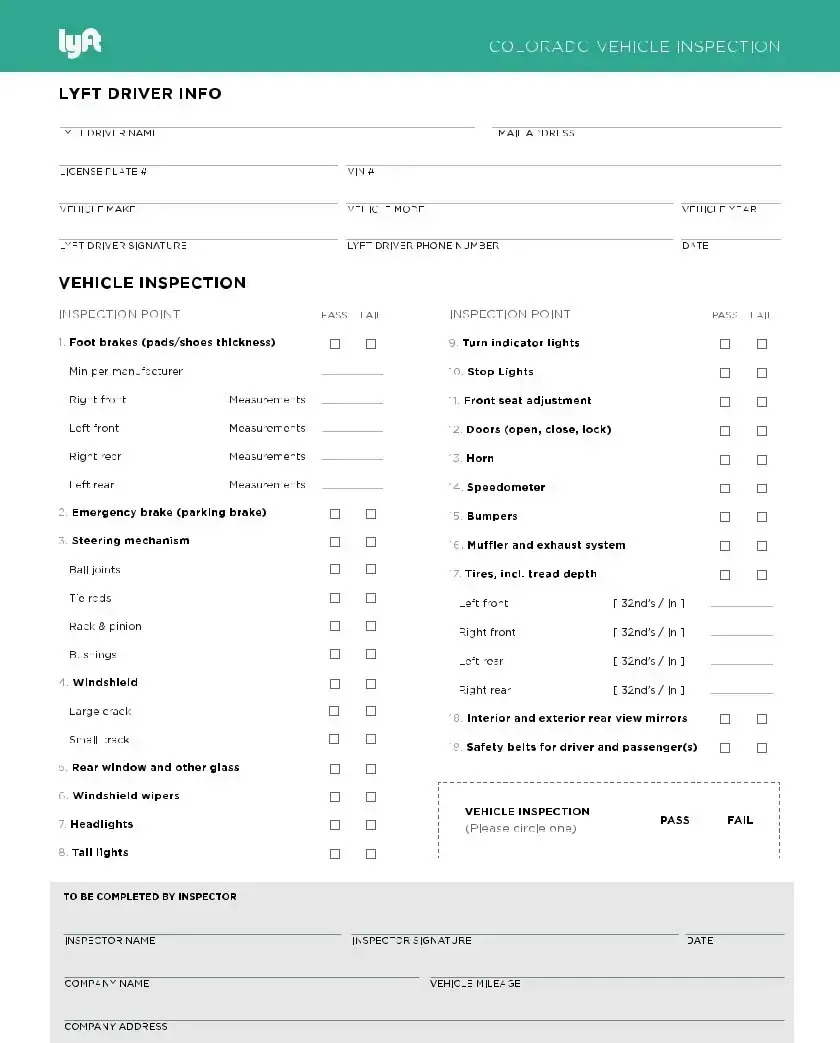The Uber Vehicle Inspection form is similar to the Lyft Inspection form in that both documents assess the safety and condition of a vehicle before it can be used for ridesharing. Each form requires detailed information about the vehicle's features, including brakes, lights, and tires. Both forms aim to ensure that vehicles meet safety standards and are roadworthy, promoting the safety of drivers and passengers alike.
The Taxi Vehicle Inspection report serves a similar purpose. This document is used by taxi companies to verify that their vehicles are safe and compliant with local regulations. Like the Lyft Inspection form, it includes checks on essential components such as the engine, suspension, and overall cleanliness. Both documents help maintain high safety standards in the transportation industry.
The Rental Car Inspection checklist is another comparable document. This form is used by rental companies to evaluate the condition of vehicles before they are rented out. It includes inspections of the exterior, interior, and mechanical components, much like the Lyft Inspection form. Both forms ensure that vehicles are in good working order for users, enhancing customer satisfaction and safety.
The DMV Vehicle Inspection report also shares similarities with the Lyft Inspection form. This report is required by the Department of Motor Vehicles to ensure that vehicles meet state safety and emissions standards. Both documents involve a thorough examination of the vehicle, focusing on crucial systems and features that affect performance and safety on the road.
The Pre-Trip Vehicle Inspection checklist used by commercial drivers is another document that aligns with the Lyft Inspection form. This checklist is designed to ensure that a vehicle is safe to operate before any trip. It includes checks for fluid levels, tire pressure, and other critical safety components, paralleling the thorough approach found in the Lyft Inspection form.
Finally, the Vehicle Maintenance Log can be seen as similar. This document tracks regular maintenance and repairs on a vehicle, helping to ensure it remains in good condition. While it focuses more on ongoing upkeep rather than a one-time inspection, both documents emphasize the importance of vehicle safety and reliability for those who use them for transportation services.

